
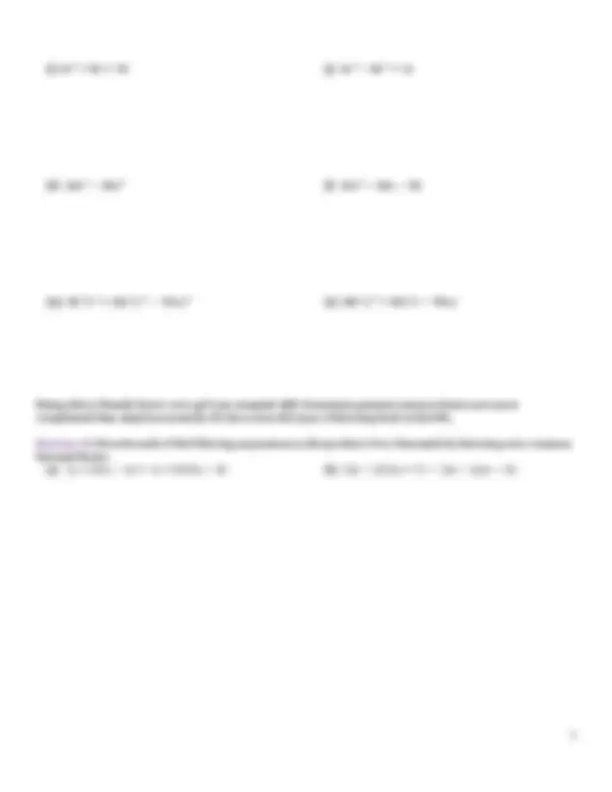
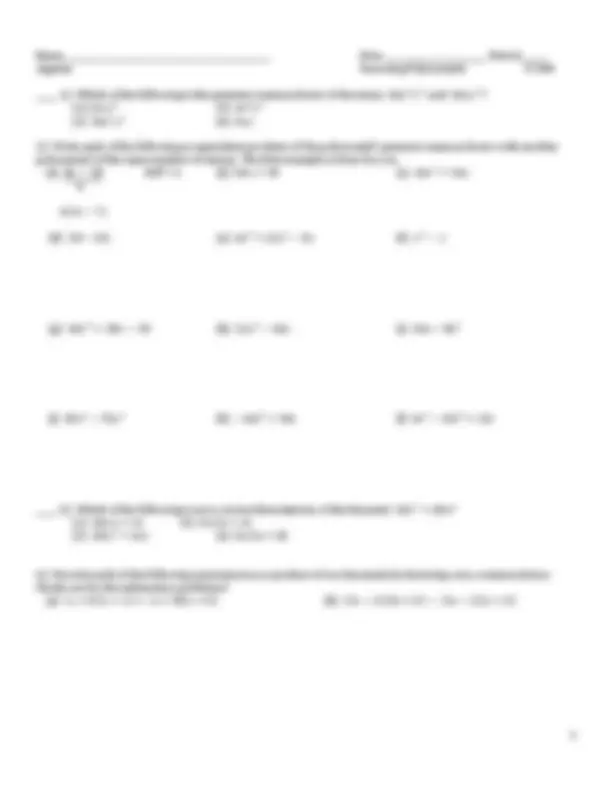
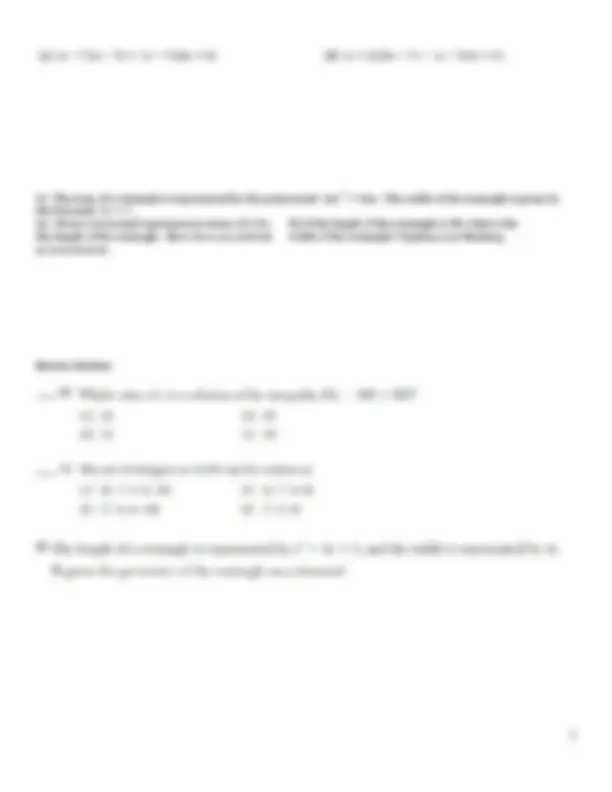


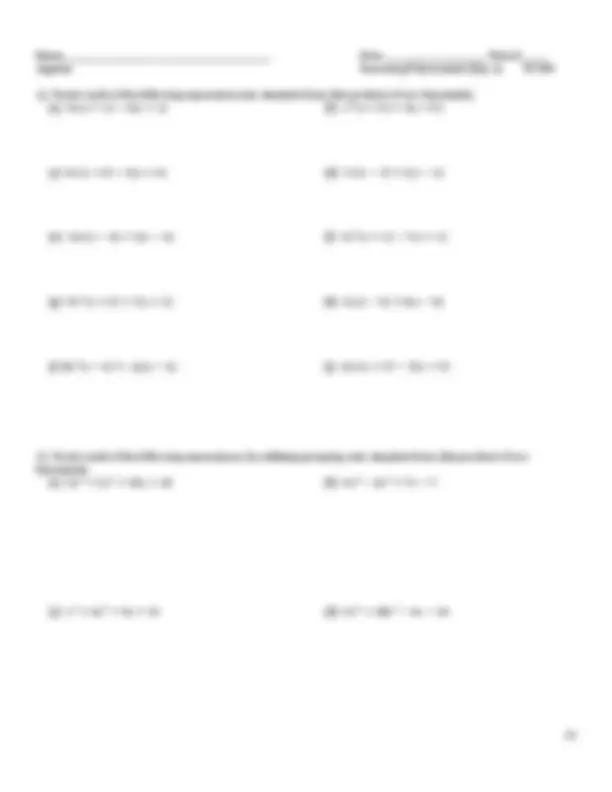
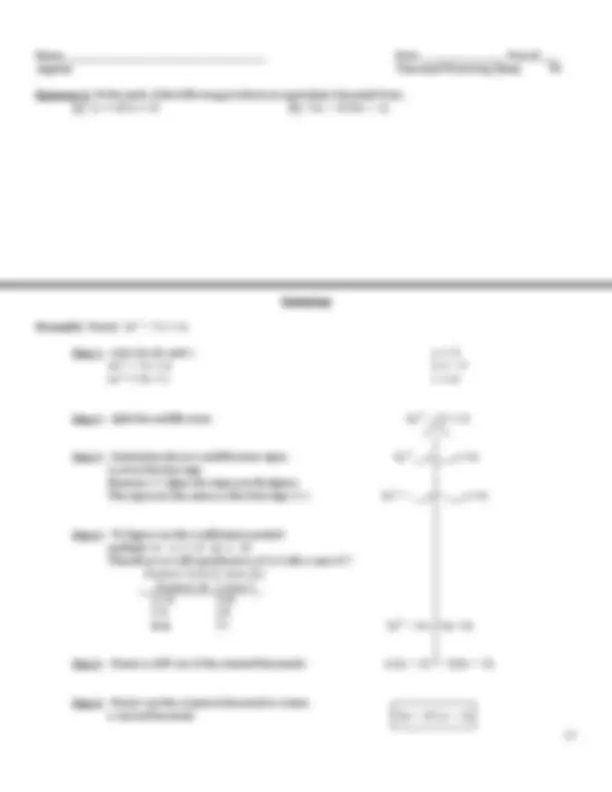


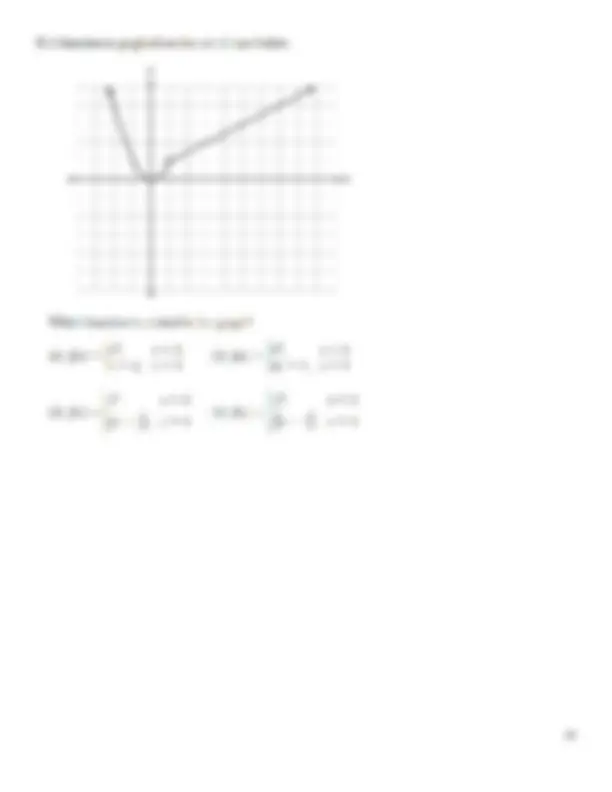

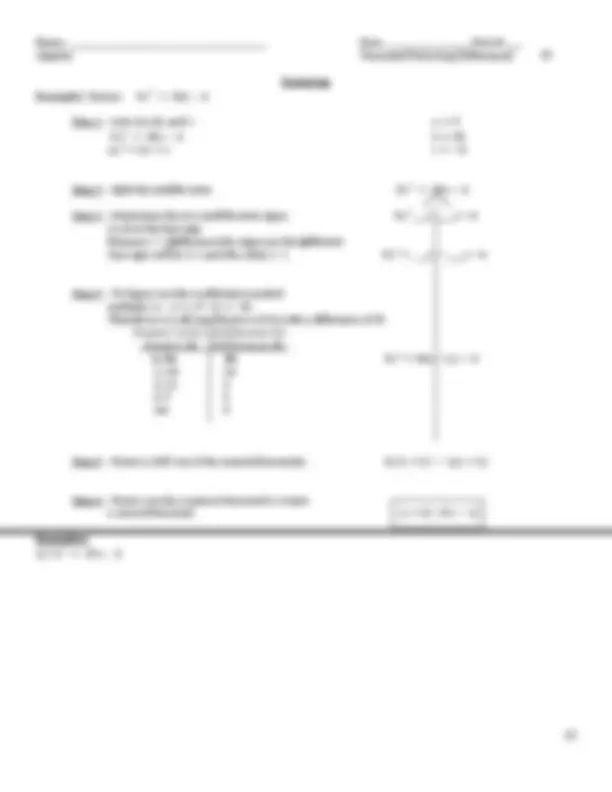


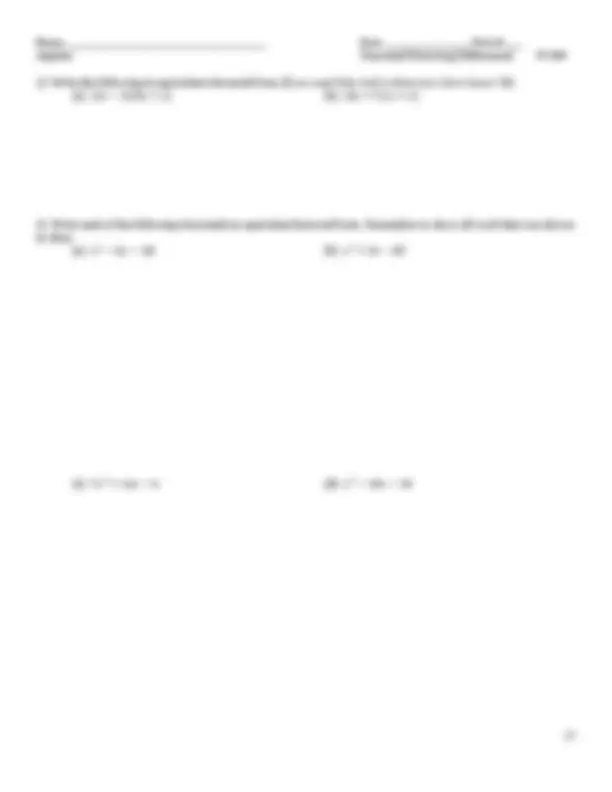

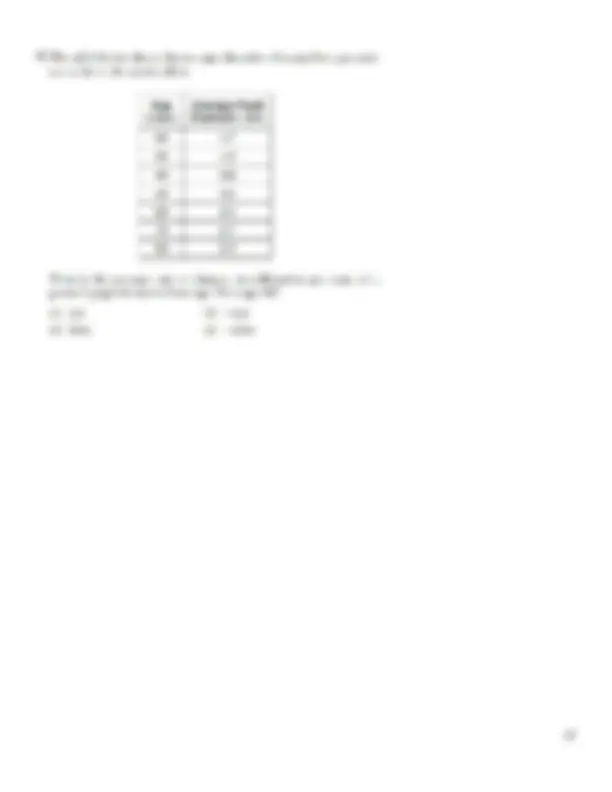





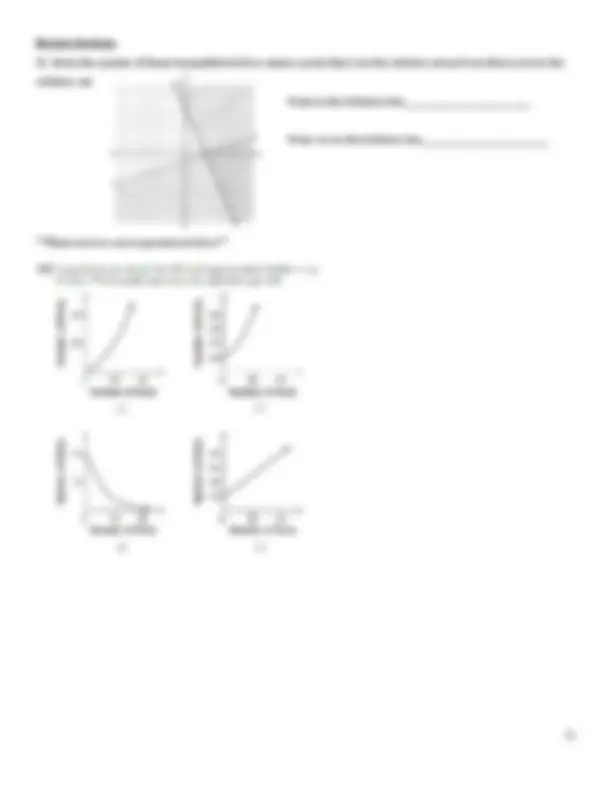
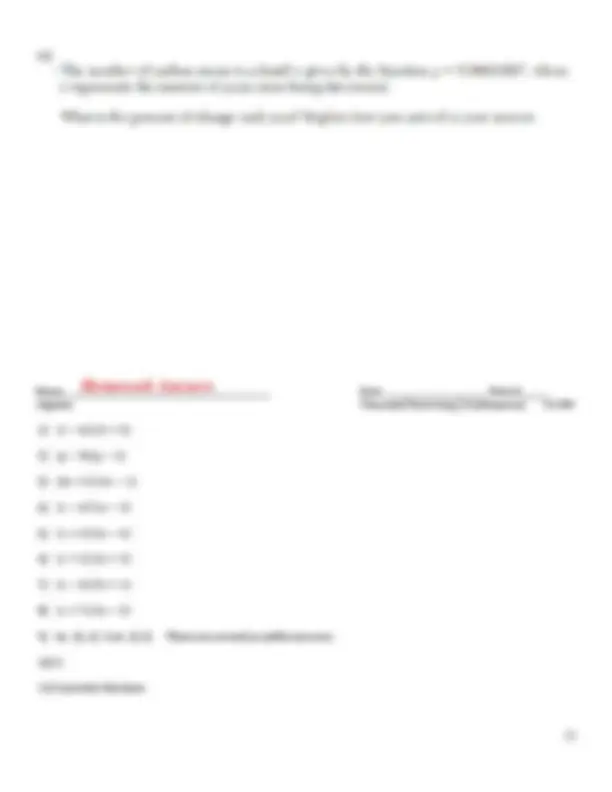
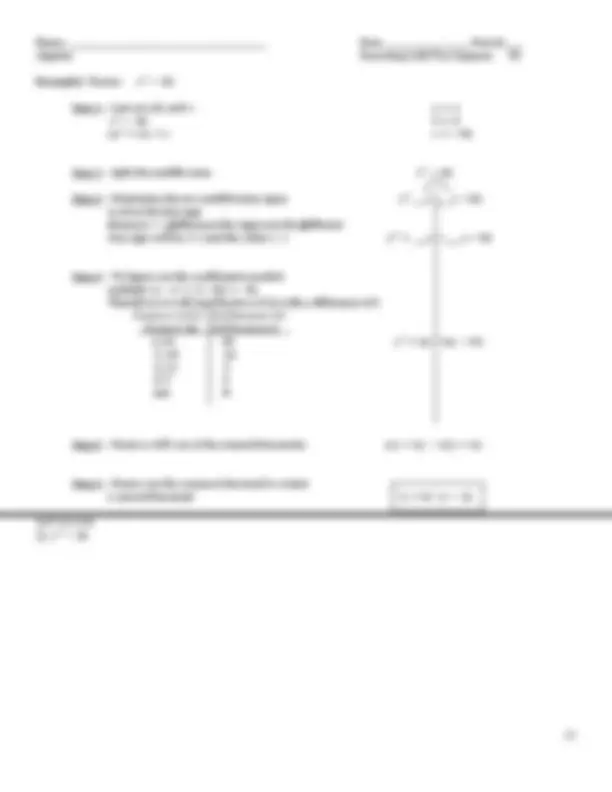
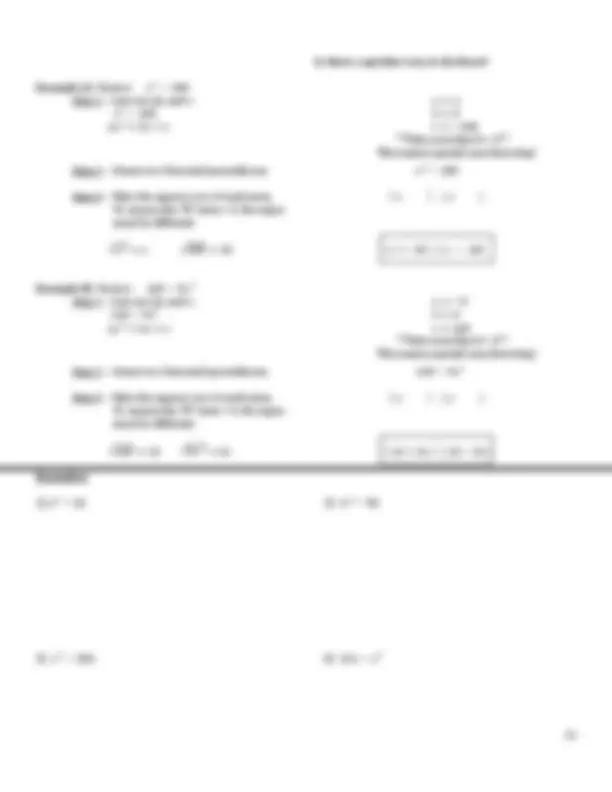



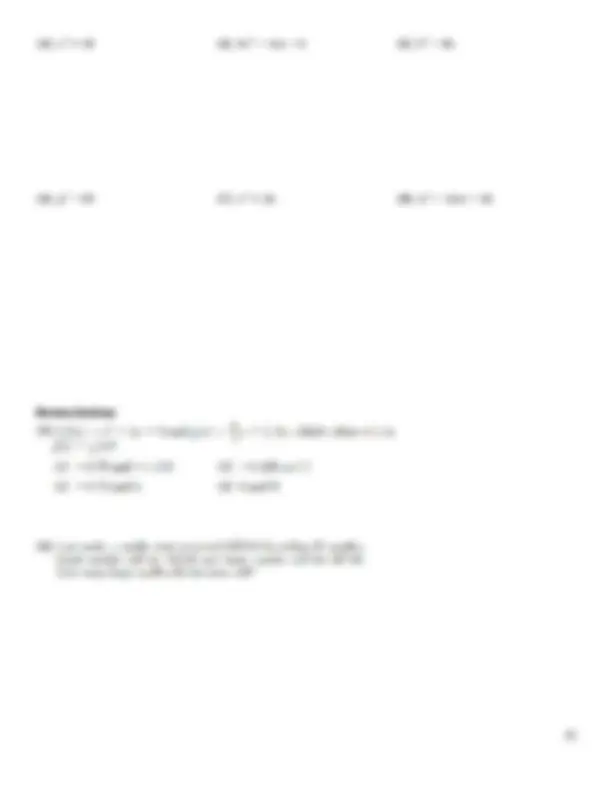

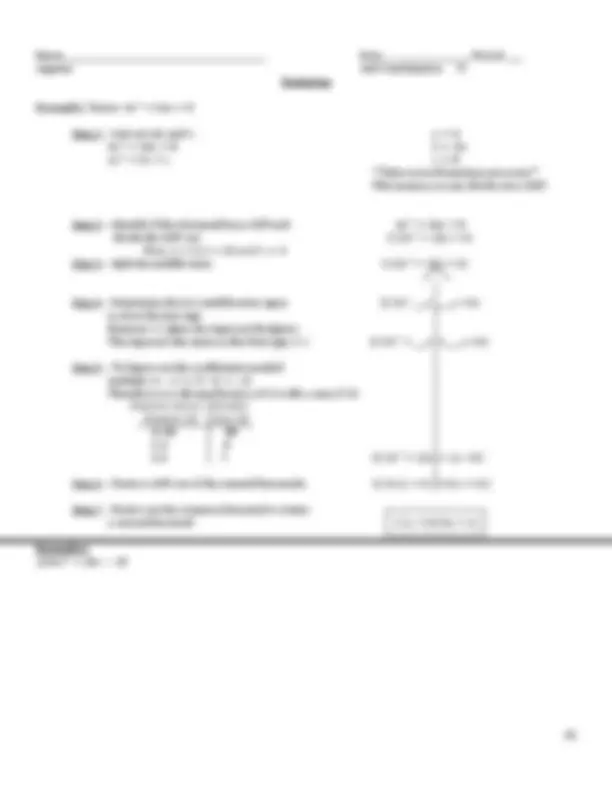




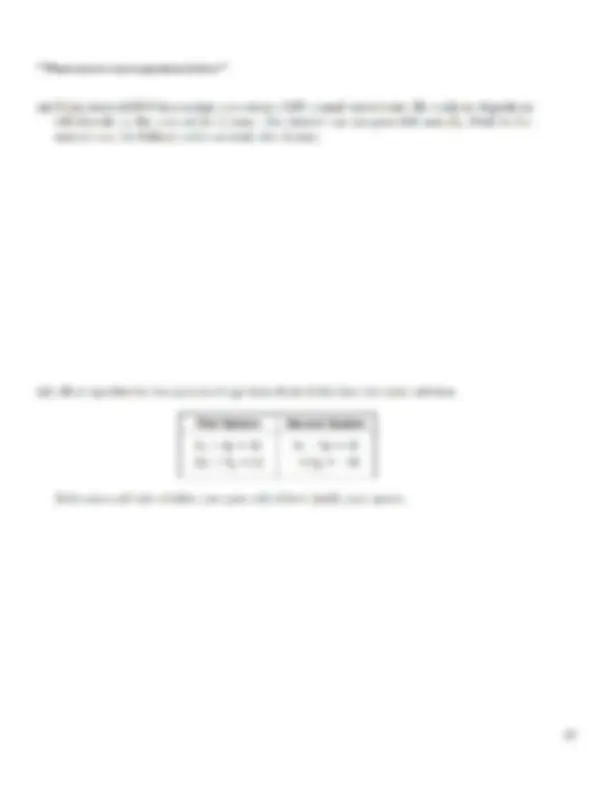



Study with the several resources on Docsity

Earn points by helping other students or get them with a premium plan


Prepare for your exams
Study with the several resources on Docsity

Earn points to download
Earn points by helping other students or get them with a premium plan
Community
Ask the community for help and clear up your study doubts
Discover the best universities in your country according to Docsity users
Free resources
Download our free guides on studying techniques, anxiety management strategies, and thesis advice from Docsity tutors
Instructions and exercises on factoring expressions using the greatest common factor (GCF) and trinomial factoring. It covers identifying the GCF, factoring expressions into simplest form, and writing trinomials in equivalent factored form.
What you will learn
Typology: Study notes
1 / 46

This page cannot be seen from the preview
Don't miss anything!







































Name __________________________________________________ Date _________________________ Period ______ Algebra Factoring Polynomials 7C
Factoring expressions is one of the gateway skills that is necessary for much of what we do in algebra for the rest of the course. The word factor has two meanings and both are important.
9
7
5
4
3
2
2
3
4
6
5
4
5
2
4
3
2
4
5
11
10
9
8
5
3
3
5
3
3
2
2
5
4
Exercise #1 : Consider the expression. (a) Write the individual terms and as (b) Using the Distributive Property, rewrite completely factored expressions. Determine as a product involving from (a). their greatest common factor.
It is important that you are fluent reversing the distributive property in order to factor out a common factor (most often the greatest common factor). Let’s get some practice in the next exercise just identifying the greatest common factors.
The greatest common factor, or GCF, is the greatest factor that divides two numbers. To find the GCF of two numbers: List the prime factors of each number. Multiply those factors both numbers have in common. If there are no common prime factors, the GCF is 1.
Exercise #2 : For each of the following, identify the greatest common factor of each. Then factor each of the following. The first example is completed for you. (a) (b)
(c) (d)
(e) (f)
(g) (h)
Name __________________________________________________ Date _________________________ Period ______ Algebra Factoring Polynomials 7C HW
_____ 1.) Which of the following is the greatest common factor of the terms and? [1] [3] [2] [4]
2.) Write each of the following as equivalent products of the polynomial’s greatest common factor with another polynomial (of the same number of terms). The first example is done for you. (a) GCF = 4 (b) (c)
(d) (e) (f)
(g) (h) (i)
(j) (k) (l)
_____ 3.) Which of the following is not a correct factorization of the binomial [1] [3] [2] [4]
4.) Rewrite each of the following expressions as a product of two binomials by factoring out a common factor. Watch out for the subtraction problems!! (a) (b)
(c) (d)
5.) The area of a rectangle is represented by the polynomial. The width of the rectangle is given by the binomial. (a) Given a monomial expression in terms of x for (b) If the length of the rectangle is 80, what is the the length of the rectangle. Show how you arrived width of the rectangle? Explain your thinking. at your answer.
Review Section :
_____ 6.)
Name __________________________________________________ Date _________________________ Period ______ Algebra Factoring Polynomials (Day 2) 7D
Recall : Factoring expressions is one of the gateway skills that is necessary for much of what we do in algebra for the rest of the course. The word factor has two meanings and both are important.
Exercise #1 : Consider the expression. (a) Identify the GCF of the expression. (b) Factor the given expression into simplest form (the product of two binomials).
Exercise #2 : Factor each of the following expression into simplest form (the product of two binomials). (a) (b)
(c) (d)
(e) (f)
(g) (h)
(i) (j)
Exercise #3 : Factor each of the following expressions, by utilizing grouping, into simplest form (the product of two binomials). (a) (b)
(c) (d)
(e) (f)
(g) (h)
Name __________________________________________________ Date _________________________ Period ______ Algebra Factoring Polynomials (Day 2) 7D HW
1.) Factor each of the following expression into simplest form (the product of two binomials). (a) (b)
(c) (d)
(e) (f)
(g) (h)
(i) (j)
2.) Factor each of the following expressions, by utilizing grouping, into simplest form (the product of two binomials). (a) (b)
(c) (d)
(e) (f)
(g) (h)
Review Section :
_____ 3.)
5.) What is the result when is subtracted from Make sure to show all your work.
Name _________________________________________________ Date _____________________ Period ____ Algebra Trinomial Factoring (Sum) 7E
Exercise 1: Write each of the following products in equivalent trinomial form. (a) (b)
Factoring
Example ) Factor
Step 1 – List out a,b, and c
Step 2 – Split the middle term
Step 3 – Determine the two middle term signs Look at the last sign Because S um the signs are the S ame The signs are the same as the first sign
Step 4 – To figure out the coefficients needed multiply Therefore we will need factors of with a sum of
Step 5 – Factor a GCF out of the created binomials
Step 6 – Factor out the common binomial to create a second binomial
Exercise 2: Answer the following questions completely. (a)
(b)
Name _________________________________________________ Date _____________________ Period ____ Algebra Trinomial Factoring (Sum) 7E HW
(1) (^) x (^12) x (^2) (3) x (^8) x (^3) (2) (^) x 12 x 2 (4) x 8 x 3
(1) (^) 2 x (^7) x (^4) (3) 2 x (^2) x (^14)
(2) (^) 2 x (^4) x (^7) (4) 2 x (^14) x (^2)
(c) (d)
(e) (f)
(g) (h)
Review Section:
There is another question below
Name __________________________________________________ Date _________________________ Period ______ Algebra Trinomial Factoring (Sum) 7E HW
3
1
(a) (b) (c)
(d) (e) (f)
(g) (h)
2
Name _________________________________________________ Date _____________________ Period ____ Algebra Trinomial Factoring (Difference) 7F
Factoring Example ) Factor: –
Step 1 – List out a,b, and c
Step 2 – Split the middle term –
Step 3 – Determine the two middle term signs Look at the last sign Because D ifference the signs are the D ifferent One sign will be and the other
Step 4 – To figure out the coefficients needed multiply Therefore we will need factors of with a difference of
Step 5 – Factor a GCF out of the created binomials
Step 6 – Factor out the common binomial to create a second binomial
Examples: